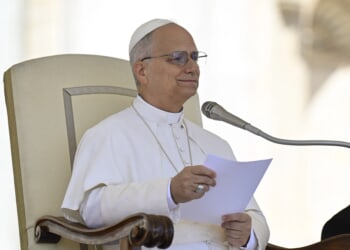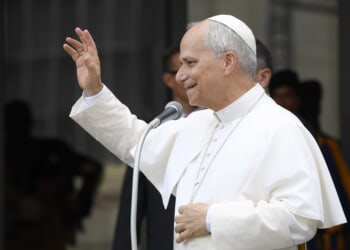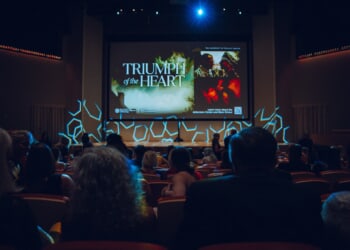One could see the murder of Charlie Kirk at Utah Valley University from 31 years away.
In the mid-1990s, leftists regularly silenced campus conservatives by banning their events or presenting absurd security costs to make holding such events prohibitive. It does not take many leaps in logic — only bounds in action — to go from stripping another human being of his or her God-given right to speak by shouting down words to doing so through outright violence. Both instances rely on a dehumanization of political opponents as justification for the unjustifiable. Thus did people who checked the other box on a ballot become Nazis, fascists, and racists.
I used to do what Charlie Kirk did — engage with college students as a conservative twenty- and thirtysomething — on a much smaller scale. I spoke, I think in 2003, on 62 campuses. I decided to stop about 15 years ago. (RELATED: Charlie Kirk: The Last Debater)
Kirk’s murder was certainly unusual. It was not exactly unexpected.
Part of this owed to a preference for my children over airplanes and hotels. The subjects of the books that I wrote no longer lent themselves so neatly to the left-right controversies that generated crowds on campus. But the major factor influencing my decision involved the frequency with which students, faculty, administrators, or all of the above muzzled my voice.
At Connecticut College, a student stood, first in front of the podium and then mirroring me as I walked about the room, as a way of obscuring me from the audience. At Michigan State, somebody pulled a fire alarm when I spoke. Professors shouted me down as I delivered a lecture at Florida International University. Administrators at Austin College cancelled a speech on ideological grounds.
In 1998, I organized an Accuracy in Academia conference called “A Place at the Table: Conservative Ideas in Higher Education” at Columbia University. Events proved that neither Columbia’s students nor administrators believed that conservatives should enjoy a place at the table on campus.
Officials from the school, hours before the conference began, suddenly demanded $3,000 in security fees. Despite the shakedown, security did little to curb a gauntlet of student protestors who screamed and even spat at attendees of a Friday evening speech by University of California Regent Ward Connerly.
The next day, the security that we paid for kept attendees from entering the hall that we had rented. When I asked them if they were censoring speech, an official responded that our speakers could still talk, but the audience (some of whom had traveled from Boston and Washington, D.C.) could not enter the hall to hear them. It seemed a distinction without a difference. We convened on an overlook of Morningside Park, where the unsatiated mob chanted “Ha Ha, You’re Outside/We Don’t Want Your Racist Lies” as the likes of John Leo and Dinesh D’Souza spoke.
In 2000 at Berkeley, a student attempted to rip the microphone cord from the wall and mooned me while I gave my presentation. Others screamed throughout the duration of my talk. In frenzied and high-volume shouts, audience members called me a murderer — even though I lectured about the guilt of an actual convicted murderer named Mumia Abu-Jamal. When the event ended, the rabble seized copies of my 44-page booklet on that murder case and held a book burning at the home of the free speech movement of the 1960s.
Most of my lectures did not involve disruptions of such a spectacular sort. About a quarter or more did so. It struck me as an exercise in futility to travel across the country to speak when so many made it their business to ensure that nobody could hear me. I opted to focus on writing.
Every conservative who spoke on campus during the 1990s and early 2000s could tell similar stories.
Many experienced worse. In 2004, two men threw pies at Ann Coulter as she spoke at the University of Arizona. A student shouting “stop the bigotry” doused Pat Buchanan with salad dressing at Western Michigan University in 2005.
The situation continued to deteriorate. In 2020, Professor Mike Adams, a veteran campus speaker forced from his post at the University of North Carolina Wilmington, killed himself days before the scheduled separation was to take place. In 2023 at San Francisco State, a man punched Riley Gaines, a former student-athlete who speaks in opposition to biological males competing in women’s sports, in the face.
Do you notice the trendline? It traveled toward the direction of a place called Nogood. One would need to submerge head in sand to not see it. The liberal media played ostrich. Take, for instance, Columbia’s campus censorship described above. Nat Hentoff, Rush Limbaugh, and The New York Post all covered Columbia’s submission to the heckler’s veto. The New York Times passed. They made a choice to overlook that — and so much else. (RELATED: Charlie Kirk Is a Casualty of the Cultural Counterrevolution)
The enormity of the campus assassination of Charlie Kirk makes it impossible for them to ignore. But when the Times and others in the mainstream media report it, Kirk’s murder comes across in a decontextualized way as though it occurred in a vacuum.
Kirk’s murder was certainly unusual. It was not exactly unexpected.
For decades, the campus Left has created an inhospitable environment for conservatives, nay, for anyone who objects to any aspect of their ideological project, on campus. Charlie Kirk gave his life to combat this intolerance. It should never have come to this. At any time over the last three decades, the campuses themselves, or a media capable of shaming the modern-day Anthony Comstocks and George Creels, could have stopped the zealots.
A Zapruder film of the event indicates that Charlie Kirk’s assassination took a split second. Anyone paying close attention knows better. It occurred in slow motion over several decades.
READ MORE from Daniel J. Flynn:
Charlie Kirk Was a Winner, His Murderer Was a Loser
The Part That the Obits Left Out About SF Power Broker John Burton





![ICE Arrests Illegal Alien Influencer During Her Livestream in Los Angeles: ‘You Bet We Did’ [WATCH]](https://www.right2024.com/wp-content/uploads/2025/08/ICE-Arrests-Illegal-Alien-Influencer-During-Her-Livestream-in-Los-350x250.jpg)
![Gavin Newsom Threatens to 'Punch These Sons of B*thces in the Mouth' [WATCH]](https://www.right2024.com/wp-content/uploads/2025/08/Gavin-Newsom-Threatens-to-Punch-These-Sons-of-Bthces-in-350x250.jpg)








